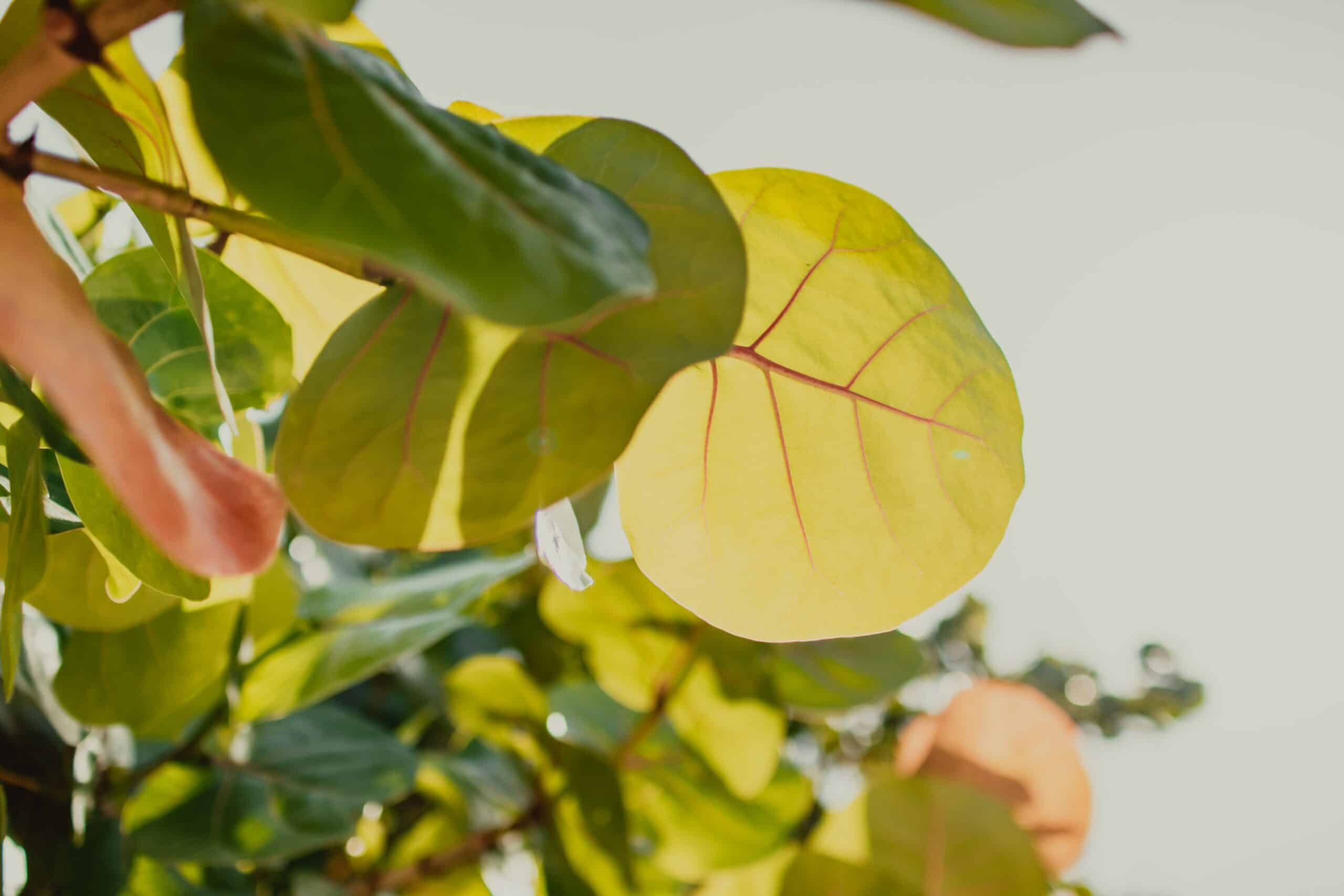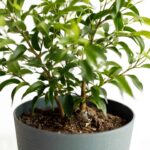The Creeping Fig is an intriguing plant that can bring a touch of the outdoors into your home. This interesting climber has lush, glossy leaves and produces small white flowers in the springtime. Caring for a Creeping Fig is relatively easy, and with minimal effort it can be kept healthy and thriving indoors! With its versatile growing habit and low-maintenance needs, this plant is a great choice for anyone looking to add some greenery to their home.
In this article, we will explore the basics of how to grow and care for a Creeping Fig indoors. We will discuss the conditions it needs to thrive, as well as tips on how to keep it healthy. You’ll also learn about its unique characteristics that make it so appealing in interior spaces. Armed with this knowledge, you’ll be ready to give your indoor space some extra life with this lovely plant!
So if you’re looking for an easy way to bring more beauty into your home, then look no further than the Creeping Fig! Read on to learn more about this unique houseplant and how you can get started taking care of one today.
Overview Of Creeping Fig
Creeping fig is a beautiful and hardy plant that can thrive indoors, adding greenery and texture to any home. Like a reassuring hug, it wraps itself around walls, containers, or trellises with its lush foliage and delicate tendrils. Its versatility is its biggest appeal!
Crawling up walls or gracefully cascading down bookshelves, creeping fig’s evergreen leaves provide a unique look that stands out even in the most crowded room. It prefers bright light but can also tolerate low light conditions when necessary. Watering regularly will help it thrive – just make sure not to overwater and allow the soil to dry between each watering session.
Since creeping fig is an easy-to-care-for plant and grows quickly, it’s no wonder why so many people are drawn to its beauty. As long as you provide it with the proper care and attention, you’ll be rewarded with lush foliage year-round! With minimal effort and only basic care, you’ll be able to reap the many benefits of growing this stunning houseplant for years to come.
Benefits Of Growing Creeping Fig
Growing creeping fig is a great way to add a pop of greenery to your home. Not only is it aesthetically pleasing, but there are also many benefits that come with growing this type of plant.
First off, creeping fig is incredibly low maintenance and requires very little upkeep. It’s an ideal choice for those who don’t have much experience with houseplants or lack the time to tend to them. Plus, it can tolerate both direct and indirect sunlight, so you don’t need to worry about finding the perfect spot in your home.
Another benefit of growing creeping fig is its ability to quickly fill up space on walls and trellises. This makes it an excellent choice for adding dimension and texture to any room without taking up too much space. And, due to its evergreen foliage and fast-growing nature, you won’t have to wait long before seeing results!
Creeping fig is definitely worth considering if you’re in the market for a new houseplant. Its easy care requirements, versatility, and quick growth rate make it an excellent choice for anyone looking for a touch of green in their home. Now that you know some of the benefits of growing creeping fig, let’s look at how best to select a pot for this type of plant.
Selecting A Pot For Creeping Fig
Choosing the right pot for your creeping fig is an integral part of ensuring its health and growth. It’s time to take a closer look at what type of pot will best suit your needs! Here are three important things you should consider when selecting a pot for your creeping fig:
Size. The size of the pot you choose will determine the amount of space that your plant has to grow, so it’s essential to pick one that provides enough room for the roots. For example, if you’re planting a small cutting, then a shallow container is ideal; however, if you’re planting an established plant then a deeper container may be necessary.
Material. The material of the container will impact how much water and sunlight is able to reach the roots, so it’s important to select one that allows for adequate drainage and ventilation. Clay or terracotta pots are popular options, as they tend to be more porous than plastic.
Appearance. Of course, aesthetics are important too! After all, who doesn’t want their plants looking their absolute best? There are many attractive pots on the market in various shapes and sizes, so try choosing one that will complement your home decor and enhance the beauty of your plant.
Once you’ve found the perfect pot for your creeping fig, it’s time to move on to light requirements – another key factor in keeping your precious plant healthy!
Light Requirements For Creeping Fig
Actions speak louder than words, and this is especially true when caring for plants. When growing a creeping fig indoors, it’s important to understand the light requirements for proper growth and development. With the right conditions, these plants can thrive in any space.
Light is essential to the health of a creeping fig. Place your plant in an area with bright indirect sunlight. If you don’t have enough natural light coming in through windows or skylights, you may need to supplement with a grow light or fluorescent bulb. The amount of light will depend on the size and age of your plant but should never be so intense that it causes burning or wilting of leaves.
When it comes to temperature, keep your creeping fig away from drafty areas or direct air conditioning vents. Ideal temperatures range between 65-75 degrees Fahrenheit during the day and slightly cooler at night. Watch out for signs of stress like yellowing foliage which may indicate too much heat or too little light being provided.
By providing adequate light and avoiding extreme temperatures, you’ll have a healthy creeping fig that can bring life into any room.
Temperature Considerations For Creeping Fig
Creeping fig plants are known to thrive in temperatures between 65 to 75°F, making them an ideal houseplant choice for many homes. In fact, statistics show that a majority of households in the U.S. fall into this temperature range. To ensure your creeping fig plant is thriving and healthy, here are some temperature considerations:
Avoid extremes in temperature; never expose your creeping fig plants to extreme cold or hot temperatures as this can cause damage to the foliage or stunt its growth.
Keep your plants away from heat vents or drafty windows as sudden changes in temperature can be harmful to your plant’s health.
Try not to move it around too often; sudden changes in location can disrupt the temperature levels your creeping fig has become accustomed to and may cause stress on the plant.
If you have air conditioning, make sure you keep the air circulating around the plant so it doesn’t get too hot or too cold while sitting directly under a vent or air conditioner unit. Keeping these tips in mind can help you create an environment that is optimal for growing and caring for a creeping fig indoors successfully.
By providing proper light and temperature requirements, your creeping fig will be able to thrive and bring beautiful greenery into any indoor space! Now let’s explore how much water is needed for optimal growth of this versatile houseplant…
Watering Needs For Creeping Fig
Watering needs for creeping fig is an important part of its care in order to keep it healthy and looking its best. It’s important to understand how much water the plant needs, when it should be watered, and what problems may occur if too much or too little water is given. Let’s look at these requirements in more detail.
First, let’s talk about how often you should water your creeping fig. The frequency of watering will depend on a variety of factors such as light, humidity, temperature, and the size of the pot the plant is in. Generally speaking, during the growing season (spring and summer) you’ll want to water it once a week or so. During winter months when growth slows down, reduce watering to once every two weeks or less depending on conditions. Here are five tips for keeping your creeping fig well-watered:
- Feel the soil before watering – If the soil feels dry to touch then it’s time to water.
- Water from below – Place your pot in a saucer of water and allow it to soak up as much moisture as possible from below rather than pouring from above which can cause leaf damage.
- Use room temperature water – Cold tap water can shock roots and harm plants so use lukewarm instead.
- Monitor humidity levels – Increase humidity around your plant by misting leaves regularly with a spray bottle or using a humidifier.
- Check drainage holes – Make sure pot has adequate drainage holes so excess moisture can escape easily after watering.
Finally, overwatering is just as bad as underwatering when it comes to creeping figs because too much moisture can cause root rot and lead to plant death if left unchecked. To avoid this problem, make sure you allow enough time between watering sessions for soil to dry out completely before giving more water again. By following these simple guidelines you’ll ensure your creeping fig remains happy and healthy!
Fertilizing Creeping Fig
It is often assumed that frequent fertilizing of plants, particularly fast-growing ones such as creeping fig, will give them the best chance to thrive. But is this really true? In order to get the best out of your creeping fig, it’s important to understand their fertilizing needs and how to provide them with the right nutrients.
When it comes to fertilizing your creeping fig, a slow-release fertilizer is the way to go. This type of fertilizer breaks down slowly over time and provides consistent nutrients for your plant without having to reapply every few weeks or so. It’s also important to bear in mind that too much fertilizer can be damaging; you should apply only enough amount of fertilizer as recommended by the manufacturer or as advised by your local gardening center.
Once you understand your creeping fig’s specific needs and how much fertilizer they need, you can then begin applying it regularly. To ensure maximum absorption of nutrients, you can use a liquid fertilizer or an organic compost tea that has been diluted with water according to instructions on the package. Once applied, make sure that you water your plant thoroughly after fertilizing in order for the nutrients to reach all areas of its roots.
By taking into consideration these tips when it comes to fertilizing your creeping fig, you can help ensure its health and growth. Moving forward, we’ll now look at pruning this evergreen vine in order for it to stay healthy and vigorous over time.
Pruning Creeping Fig
Pruning creeping fig is an important part of its care. This technique can help you maintain the shape and size of your plant, or even create a unique look like topiary art. It’s essential that you understand how to prune your creeping fig correctly for the best results. Here are three key points to keep in mind when it comes to pruning:
Prune your creeping fig at least once a year, or more if desired. This helps ensure that the vines don’t become too long or get overgrown. You can also use pruning to encourage new growth and keep your plant looking its best.
When cutting off sections of your plant, be sure to make clean cuts close to the stem. Doing so will promote healthy, new growth and discourage disease from spreading.
Regularly remove dead leaves, stems, and flowers so they don’t spread any diseases that may affect the health of your plant.
By following these tips, you can easily keep your creeping fig looking beautiful! With proper pruning techniques, you’ll have a healthier and more attractive-looking plant year-round. Now that we’ve discussed pruning techniques for your creeping fig, let’s take a look at common diseases and pests it may encounter during its lifetime.
Common Diseases And Pests Of Creeping Fig
Creeping fig is a popular plant for indoor environments, with one in five households having it as part of their decor. As with any other plant, it’s important to be aware of common diseases and pests that can affect its health and growth. In this article, we’ll discuss some of the most common diseases and pests of creeping fig so you can take steps to prevent them from affecting your own plants.
The most common pest of creeping fig is mealybugs – small, soft-bodied insects that feed on sap from the leaves and stems of the plant. Mealybugs can lead to yellowing leaves, wilting, and stunted growth in the plant. To prevent an infestation, check your plants regularly for signs of these pests and treat them immediately if you find any.
Fungal diseases can also affect creeping figs if they are overwatered or grown in overly humid conditions. These diseases include leaf spots, root rot, crown rot, and powdery mildew. To protect your plant from these fungal diseases, make sure you water only when necessary and provide adequate air circulation around the plant to reduce humidity levels. Additionally, be sure not to overfertilize your plants as this could further contribute to disease development.
Taking proactive steps like these will help keep your creeping fig healthy and thriving for years to come! By understanding what types of diseases and pests may affect your plants, you can take measures to ensure they stay safe from harm. This will help ensure they remain beautiful additions to your home or garden for many seasons to come.
Propagating Creeping Fig
Propagating creeping fig is a great way to enjoy the beauty of this vigorous, versatile vine in your home. It’s also a fantastic way to get more plants without spending any extra money. While propagating may sound like a daunting task, it’s actually quite simple and straightforward.
The first step in propagating creeping fig is to find a healthy stem with several leaves on it. Taking cuttings from this stem and removing the lower leaves will help create strong roots for the new plant. Once you have your cutting, place it in a pot filled with moist soil and cover the pot with plastic wrap or a clear container. This will help keep humidity levels high and encourage root growth.
To finish off the propagation process, place the pot in indirect light and check regularly to ensure that the soil stays damp but not soggy. After about two weeks, you should start seeing signs of new growth – when you do, your propagated creeping fig is ready to be repotted!
Repotting Creeping Fig
Repotting creeping fig is like giving it a fresh start in life, which can help it thrive. It’s important to give your creeping fig the best care you can, and repotting it every couple of years is a great way to keep it healthy. Here are four steps to successfully repot your creeping fig:
- Choose an appropriate pot size – one that’s not too large or small for the plant.
- Remove the plant from its current pot and shake off any excess soil.
- Place the plant in the new pot, adding soil around its roots as needed.
- Water the plant until all of the soil is evenly moist and allow it to sit for a few days before transferring it back into its original spot or onto a shelf or windowsill.
Repotting your creeping fig will help keep it healthy by providing it with new soil, ample room for growth, improved drainage, and better access to light and air circulation. Additionally, this process also allows you to check for pests or other issues that may have developed since the last time you repotted your plant and gives you an opportunity to trim away any dead leaves or stems if necessary. By taking these steps when repotting your creeping fig, you’ll be able to provide your beloved houseplant with optimum care so that it continues to thrive for years to come. With proper care and attention, there’s no limit on how much joy this versatile climbing vine can bring!
Potential Benefits Of Creeping Fig
The potential benefits of growing creeping fig are numerous, and it’s no wonder why this plant is so popular. From its lush green foliage to its ability to climb along walls and trellises, the creeping fig can bring a unique look to any space. But beyond its aesthetic qualities, the creeping fig has several other advantages that make it worth considering.
One of the greatest benefits of this plant is its hardiness; once established, it’s capable of withstanding some neglect and still thrive. It also doesn’t require much water or fertilizer, making it an ideal solution for busy gardeners who don’t have time for constant maintenance. Plus, due to its slow growth rate, you won’t have to worry about it becoming invasive or spreading too quickly.
These are just a few of the great things about the creeping fig – there’s plenty more that make it worth having in your home or garden. And while there are some potential risks involved in growing one (such as overwatering), they can be easily avoided with proper care and attention. With that in mind, let’s move on to discussing some tips for successfully growing your own creeping fig plant.
Tips For Growing Creeping Fig
Growing creeping fig can be a rewarding experience. It’s an evergreen, vining plant that is easy to care for and can bring life to any indoor space. Here are some tips for growing it:
• Start with a small pot of soil and fertilizer. This will help the creeping fig get established in its new environment. • Place the pot in a spot where it will receive plenty of indirect sunlight. This helps keep the leaves vibrant and alive. • Prune the vine regularly to keep it from getting too unruly. Regular pruning also encourages new growth, making your plant look fuller, lusher, and healthier than before! • Water your plant every two weeks or so, depending on how dry the soil gets. This helps keep the roots strong and hydrated. • Fertilize your plant every few months with a balanced fertilizer to give it an extra boost of nutrients.
These tips should help you get started growing and caring for your creeping fig! With proper care and attention, your creeping fig should thrive indoors for many years to come. With all this information on hand, you’re ready to tackle any troubleshooting issues that may arise while taking good care of your creeping fig plant.
Troubleshooting Common Issues With Creeping Fig
Did you know that creeping fig is one of the most popular houseplants in the world? This is due to its vibrant foliage and resilience as a plant. If you’re looking to grow this climbing vine indoors, there are some considerations you should bear in mind. In this section, we’ll discuss the troubleshooting common issues with creeping fig.
First, it’s important to note that creeping fig requires bright indirect sunlight and high humidity levels to thrive indoors. If either of these conditions aren’t met, it’s likely that your plant will experience stunted growth or brown patches on its leaves from sunburn or dehydration. To ensure it get enough sunlight and moisture, place your creeping fig near an east-facing window and mist it daily with a spray bottle.
In addition to providing adequate care for your creeping fig, it’s essential to monitor your plant for pests like mealybugs or aphids which can cause serious damage if not dealt with quickly. These pests feed off of the sap inside the stems and leaves of the plant, so keep a lookout for any discoloration or sticky residue near the stem base which could indicate their presence. The best way to get rid of them is by removing them manually with a cotton swab soaked in rubbing alcohol or by using an insecticidal soap solution.
It’s also important to regularly trim away dead leaves or stems as they can spread diseases among other parts of the plant. Pruning back any overgrown branches will help encourage new growth as well as discourage pests from infesting your plant. With proper care and attention, there’s no reason why your creeping fig won’t thrive indoors!
Advantages Of Growing Creeping Fig Indoors
Creeping fig is a beautiful vine that can add texture and vibrancy to any indoor space, like an evergreen tapestry cascading across the walls. Growing it indoors has some distinct advantages that make it an attractive option for anyone looking to spruce up their home.
From richer colors to fewer pests, growing creeping fig indoors gives you all the best parts of the plant without some of the outdoor difficulties. The lush foliage is usually deeper and more vibrant than when grown outside, and its leaves provide a unique look that stands out against plain walls. This means you can have an eye-catching piece in your home without much effort!
Plus, since it’s sheltered from outdoor elements and critters, it’s less likely to suffer from disease or become infested with bugs. You won’t have to worry about checking for pests or applying treatments as often as you would with outdoor plants. This makes creeping fig an ideal choice if you’re looking for low-maintenance greenery that still adds a lot of character to your living space!
Frequently Asked Questions
How Often Should I Water My Creeping Fig?
Watering your creeping fig is an important part of keeping it healthy and growing. The exact amount of water needed will vary, depending on the humidity levels in your home and other environmental factors, such as how much light your plant gets. Generally speaking, you should check the soil of your creeping fig every few days to make sure it’s not too dry. If the top inch or two of soil feels dry, give your plant a good drink until water seeps out the bottom of its pot. You don’t want to overwater it though; if the soil is soggy or muddy, wait a few days before watering it again.
If you’re unsure whether or not to water your creeping fig, a helpful tip is to look at its leaves for clues. If they look droopy or wilted and feel dry to the touch, that’s a sign that it needs more water. On the other hand, if there’s condensation on its leaves and stems, that means it’s getting enough moisture from the air so no additional watering is necessary.
You may also want to mist your plant occasionally. This can help increase the humidity levels around it without causing root rot from over-watering. A combination of watering as needed and misting twice a week should keep your creeping fig happy and healthy!
Is Creeping Fig Suitable For Outdoor Planting?
Growing and caring for a creeping fig has many benefits, both indoors and outdoors. But before you decide to grow one, it’s important to know if it is suitable for outdoor planting or not.
Creeping fig can be planted outdoors in the right conditions. It’s an evergreen climber with small leaves that can tolerate full sun, partial shade, and even some frost. When grown outdoors, it will thrive in well-draining soil with regular watering and plenty of organic matter to help keep the roots healthy. It may also benefit from being given a semi-regular pruning to maintain its shape and size.
If your climate allows for outdoor planting of creeping fig, then you should consider doing so as long as you provide the plant with adequate water and care. With the right amount of attention and effort, your creeping fig can look stunning when planted outdoors! This hardy vine will add beauty to any garden or landscape while providing you with lush foliage all year round.
How Can I Encourage More Bushy Growth In My Creeping Fig?
When it comes to the art of growing creeping fig, there’s a special kind of satisfaction in watching it become lush and bushy. It’s like walking through a secret garden full of lush greenery – just with much less effort. That said, as rewarding as it can be, there are some challenges that come with cultivating your own creeping fig. But don’t worry, with a few simple tips and tricks, you can encourage more bushy growth in no time!
To help you get started on the path to success, here’s an allegory: Imagine that you’re looking out over your garden from a mountain top. You want to create a dense garden full of life and color but all you see is barren land. The mountainside is too steep for any tools or equipment to make its way down. So what do you do? You take the initiative and slowly start building up the soil until eventually it becomes fertile enough for plants to grow.
In reality, this same concept applies when trying to grow more bushy creeping figs. To begin with, give your creeping fig plenty of water and indirect sunlight so that the roots have an environment where they can thrive. Additionally, trimming off any dead leaves will give new branches room to spread out and provide air circulation for healthier growth throughout the plant. Finally, fertilizing every few weeks can provide essential nutrients that will keep your creeping fig healthy and vigorous:
• Watering: Make sure your creeping fig is receiving adequate water by watering it twice a week or whenever the soil feels dry when touched • Sunlight: Place it in an area where it will receive indirect sunlight • Trimming: Cut off any dead leaves from time-to-time • Fertilizing: Feed once every two weeks using a balanced fertilizer
By following these steps and providing loving care for your creeping figs, you’ll be well on your way towards achieving lusciously bushy results! With regular attention to detail and patience for the process, soon enough you’ll have yourself a beautiful little piece of nature right in your own home.
What Should I Do If My Creeping Fig Is Not Growing?
If your creeping fig is not growing, don’t despair! There are several steps you can take to help the plant thrive. By following these tips, you’ll soon see healthy growth and lush foliage.
First, make sure the soil you are using is well-draining and nutrient-rich. Creeping figs prefer slightly acidic soils that are moist but not soggy. If necessary, amend the soil with peat moss or another soil amendment to improve drainage and increase fertility.
Next, provide plenty of bright indirect light for your creeping fig. It should receive at least four hours of sunshine a day; however, direct sunlight can be too intense and may cause leaf burn. The plant will also benefit from regular misting or use of a humidity tray to keep its environment moist.
Additionally, fertilize your creeping fig regularly to ensure it has all the necessary nutrients for growth: • Choose an organic fertilizer that’s specially formulated for houseplants and follow the instructions on the label • Feed your plant every two weeks during its active growing season (spring through fall) • Cut back on fertilizing during winter months when it’s dormant • Flush out excess fertilizer salts from the soil every few months with a thorough watering
Finally, prune away any dead or dying leaves as needed to keep your creeping fig looking neat and tidy. This will also encourage bushier growth over time. With a little bit of extra care and attention, you’ll be able to enjoy healthy foliage in no time!
Is Creeping Fig Prone To Any Particular Pests Or Diseases?
The creeping fig is a beloved houseplant, but it can be prone to certain pests and diseases. While this isn’t necessarily common, it’s important to know what to look out for if your creeping fig isn’t thriving. But before we dive into that, let’s take a step back in time.
Back in the 18th century, when the first North American colonists arrived at their new home, they were met with lush forests filled with creeping figs. Fast forward to today and these same plants are still widely popular as houseplants due to their dense foliage and low maintenance requirements.
Unfortunately, even these resilient plants can suffer from certain pests or diseases if not cared for properly. Common ones include aphids and scale insects which feed on the sap of the plant, causing leaves to yellow or curl up. Fungal diseases such as root rot can also be problematic if there is too much moisture around the roots of the plant. To prevent such issues from occurring, make sure you’re providing your creeping fig with adequate light and water while also regularly cleaning any dead leaves or debris that accumulates around its base. With just a bit of extra care and attention you’ll have a healthy and thriving creeping fig in no time!
Conclusion
It’s clear that Creeping Fig is a great addition to any garden or home. With its unique look and hardy nature, it’s no surprise that this plant has become so popular. But don’t be fooled – Creeping Fig isn’t as easy to grow and care for as you might think! It requires careful attention and regular pruning to keep it looking its best. With the right knowledge and dedication, however, you too can have a magnificent climbing fig in your home or garden!
Oh, but if only people knew how difficult it really is to grow and care for Creeping Fig! All those tedious hours of pruning and monitoring for pests…the nightmares of over-watering or under-watering the poor thing. The sheer amount of effort needed to keep this delicate creature alive would make even the most dedicated gardener faint!
But no matter how challenging it may be, one must remember: with a bit of patience, dedication and love, anything is possible! So get out there and show your Creeping Fig some caring attention – who knows what beautiful results await?





























